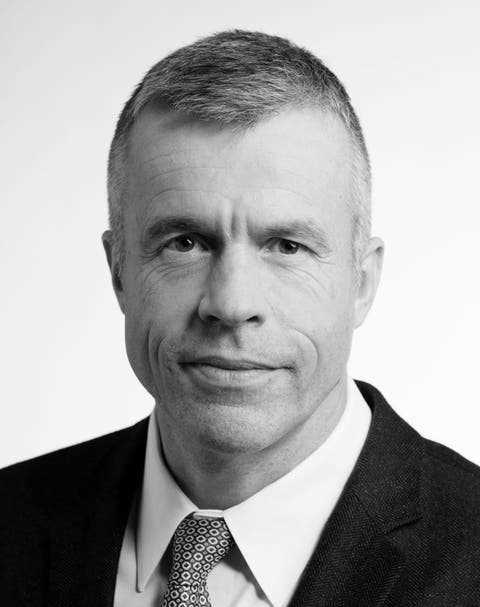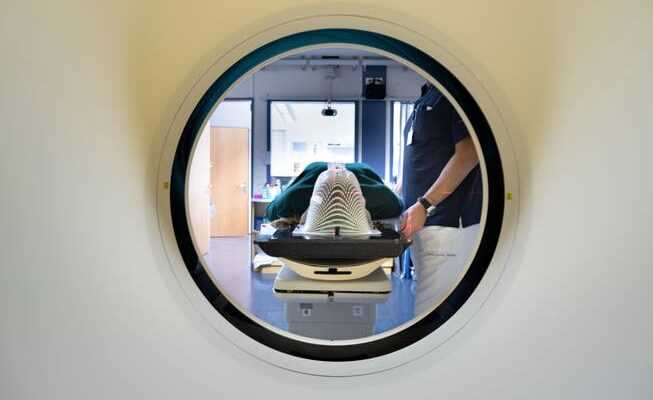Says Santésuisse A, says Curafutura almost certainly B: The two associations of health insurers disagree on key issues, although they actually represent the same interests. This makes urgent reforms more difficult.
How much can this examination cost? The tariff for outpatient medicine is one of the major construction sites of health policy.
There are many tedious meetings in the Federal Palace, but this one must have been particularly bad. On one side sat the most important lobbyists in the healthcare sector, from doctors to health insurance companies. On the other side: the 25 National Councilors of the Health Commission. They want the federal government to finally be able to introduce a new outpatient tariff – one of the most important tasks of the legislature. It is about 12 billion francs annually from the basic insurance.
The representatives of the two health insurance associations Curafutura and Santésuisse caused cross-party anger at the meeting: They are said to have contradicted each other diametrically on practically all relevant points, and mostly vehemently. Some report that the insurers’ emissaries quarreled more among themselves than with their natural adversaries, the hospitals and doctors.
There’s a system. Groundbreaking decisions are pending in health policy. First of all, there is the collective bargaining dispute, which the Federal Council should settle soon; then this week, for the first time, the initiative of the Mitte party for a “cost brake” will come to parliament; and in September, the controversial “cost control” will continue to be debated, which envisages financial corrections at the expense of doctors and hospitals in the event of an excessive increase in the number of cases.
“Will not do their job justice”
The associations of health insurers disagree on many of these questions. Their wrangling over the tariff is slowly taking on the characteristics of a religious dispute. But they are also sending out conflicting signals when it comes to “cost control”: Curafutura is against it, and Santésuisse is in favor.
The echo from politics from left to right, on the other hand, is relatively unanimous: devastating.

“That’s an impertinence”: Albert Rösti.
“It doesn’t work that way, it’s an intolerable situation,” criticizes the President of the Health Commission, National Councilor Albert Rösti (SVP). “It is normal for doctors and insurers to have different points of view. But how should politicians be able to get a reasonable picture if not even the associations that represent the same interests agree?”
That is an “imposition”, Rösti states: With such a complex and important matter, politics is dependent on a consolidated assessment of the various camps. “If the insurers’ associations are not able to provide us with this, they are not doing their job justice.” This increases the risk that the federal government will take steps towards state medicine.
The split of 2013
The scandal broke out nine years ago. In April 2013, three of the largest health insurance companies – CSS, Helsana and Sanitas – founded their own association with a great deal of fanfare: Curafutura. The first president was the current Federal Councilor Ignazio Cassis. Previously, Santésuisse had only represented the interests of the insurers. Most cash registers remained loyal to the association. Only the KPT later joined the three renegades.
One reason for the split was the equalization of risk: the “low-cost insurance companies”, which mainly attracted healthy young people with low premiums, resisted paying insurers with many sick customers more. In addition, the big health insurers were no longer interested in cross-subsidizing data management or collective bargaining services for their smaller competitors. According to experts, however, there were also strategic differences that still exist today: while smaller health insurers, to put it loosely, see themselves purely as paying agents, larger insurers want to break new ground and play a greater role in shaping medical care.
Back then, Curafutura started out with the aim of softening the fronts and helping common solutions to achieve a breakthrough – even if that may sound involuntarily funny given the current situation.
Too “stubborn” for a rapprochement?
“The existing blockades have only increased with the split,” says SP health politician Barbara Gysi. She observes that the mood has heated up on both sides in recent years. The impression often arises that it is no longer just a matter of content, but of being right. The tone is sometimes inappropriate. “The associations are demanding a lot, but are not able to come up with solutions together. Instead of cooperating with the federal government, they torpedo its austerity efforts and don’t want any interference.”
It doesn’t sound much better for Ruth Humbel, one of the most experienced health politicians: “It is fundamentally nonsensical that there are two associations for one and the same industry, which then cancel each other out in almost all crucial issues.” However, she has little hope that an early rapprochement could succeed. The top staff on both sides was too “stubborn” to do this.
Ex-Santésuisse man: “an embarrassing kindergarten”
Anyone who speaks to representatives of the two associations quickly realizes that the frustration is great on both sides and the rift is deep. It is less about ideological differences. At the center of the conflict is the question of how hard the health insurance companies should negotiate with hospitals and doctors. Curafutura stands for a more conciliatory line, Santésuisse for a hard one.
Curafutura therefore accuses Santésuisse of leaving behind scorched earth by insisting on the cheapest possible solutions in collective bargaining. That causes great damage, after all, you have to work together with the medical providers in the future. Santésuisse, on the other hand, criticizes that Curafutura does not pay enough attention to the interests of the premium payers – and is therefore being ripped off by the doctors. Santésuisse also does not understand the resistance of the competition to weighty savings proposals from the Federal Council.
The two associations blame each other for the reform backlog. The Comparis health insurance expert Felix Schneuwly, who worked for Santésuisse until the split, speaks of a “partly embarrassing kindergarten”. It is not least about personal animosity: the split left wounds that have not healed nine years later.
A missed opportunity
Felix Schneuwly hardly sees any advantages in the dichotomy of the industry. The balance is clearly negative. It sounds similar at Santésuisse. The spokesman Matthias Müller says: “Santésuisse would like even more support in favor of the premium payers. If all health insurers help out here, we would very much welcome that. Whether under one roof or not is less important – even if we are quite open to it.” The members who have dropped out see it differently. Curafutura spokeswoman Simone Hinnen says: “It currently takes two associations to meet the major challenges in the healthcare system with good solutions.”
It is not only interpersonal tensions that make reunification difficult, but also the career prospects of the decision-makers are at stake. Two associations offer more jobs than one. An opportunity for rapprochement has just been missed: Santésuisse has decided to immediately replace President Heinz Brand, who is stepping down in June. The designated successor is the center politician Martin Landolt. Does this mean that reunification is even further away?

Hopes for a rapprochement: Lorenz Hess.
“On the contrary,” says Lorenz Hess. He can assess the current problems from both sides: Hess is a member of the national council of the Mitte party and president of Visana, one of the largest Santésuisse health insurance companies. He doesn’t beat around the bush: Of course things aren’t going well today. “No other industry affords the luxury of financing two separate associations, which then paralyze each other on important issues.” You have to leave sensitivities behind. Politicians rightly expect the associations to pull themselves together.
Hess is more optimistic than others. He sees potential for a rapprochement and has concrete ideas, he says. He does not want to comment further on this. Only so much: The muddled situation surrounding the outpatient tariff could be a salutary shock. “Slowly, everyone should realize that we can only achieve something together.”
